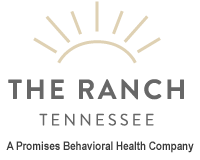Alcohol consumption is often motivated by stress. Some specific situations, such as anxiety, can lead to self-medication, with individuals realizing that alcohol can help them feel more in control of a situation. However, it can also lead to misuse of alcohol, and result in related consequences. Individuals with social anxiety disorder (SAD) may be especially likely to use alcohol to offset the symptoms of their illness. Some explain this as a natural result of the pairing of alcohol with social situations like parties and mixers. A recent study examined the relationship between coping motives for drinking and their role connected with SAD (Windle & Windle, 2012). The study was based on a belief that in individuals who suffer from SAD, drinking motives could act as a mediator between alcohol problems and SAD. The researchers gathered information about a group of 717 individuals involved in the Lives Across Time (LAT) prospective study adolescents, which included a total of 1,205 young people. The data included multiple variables measured in high school and included a follow-up in the young adult years. The information was collected within four waves, conducted in the form of surveys held at school with sophomores and juniors. The waves were separated by six month intervals. The final two waves were in-person interviews and were separated by five or six years. They occurred when the participants were at the average ages of 23 and 29. At each major stage, the researchers measured drinking motives, such as coping, social and enhancement. For adolescent survey waves, the researchers used the Center for Epidemiological Studies Depression Scale and also assessed the frequency and amount of the consumption of alcohol in the last month. During the young adulthood waves, the interviewers used the Composite International Diagnostic Interview to assess the participants’ history of depression and various anxiety problems. Linear regressions models were used to analyze the various aspects of the data, including the motives of young adults when they drink, as outcomes and anxiety and depression histories as predictors to understand the correlation between SAD and specific drinking motives. The results showed that 13 percent of the participants met criteria for SAD at some point during their lives. The analysis showed that SAD was a predictor of coping drinking motives, but was not a predictor for social or enhancement motives. In addition, the researchers found that depression, panic disorder and anxiety disorder were all predictors of endorsing coping drinking motives. There were several limitations noted related to the findings of the study. For instance, the sample used was largely white, middle-class individuals, and self-report was a major technique for data gathering. The findings of the study show that there may be a connection between coping motives and not only SAD, but possibly any general mental distress.
Call for Immediate Help:1.844.876.7680
